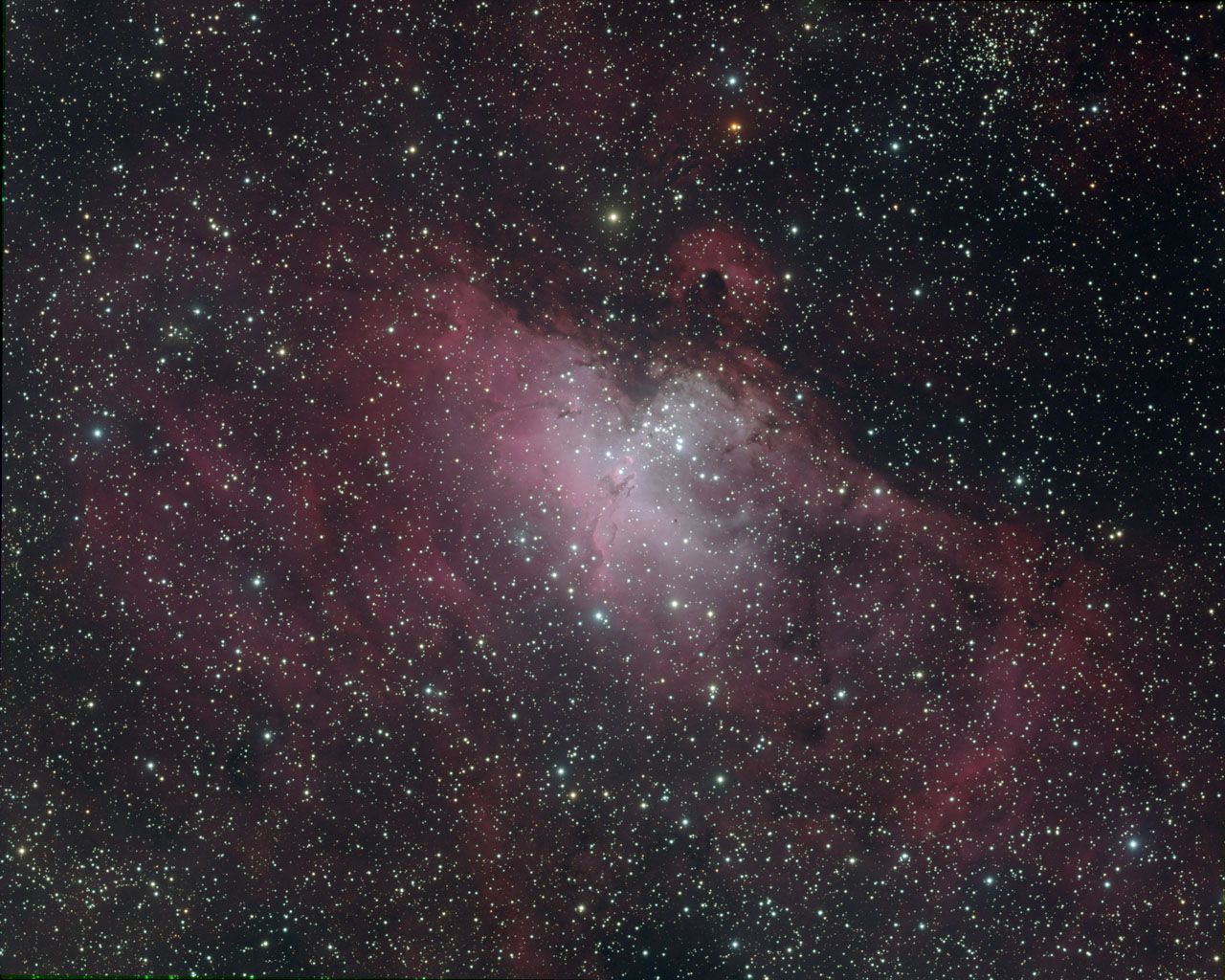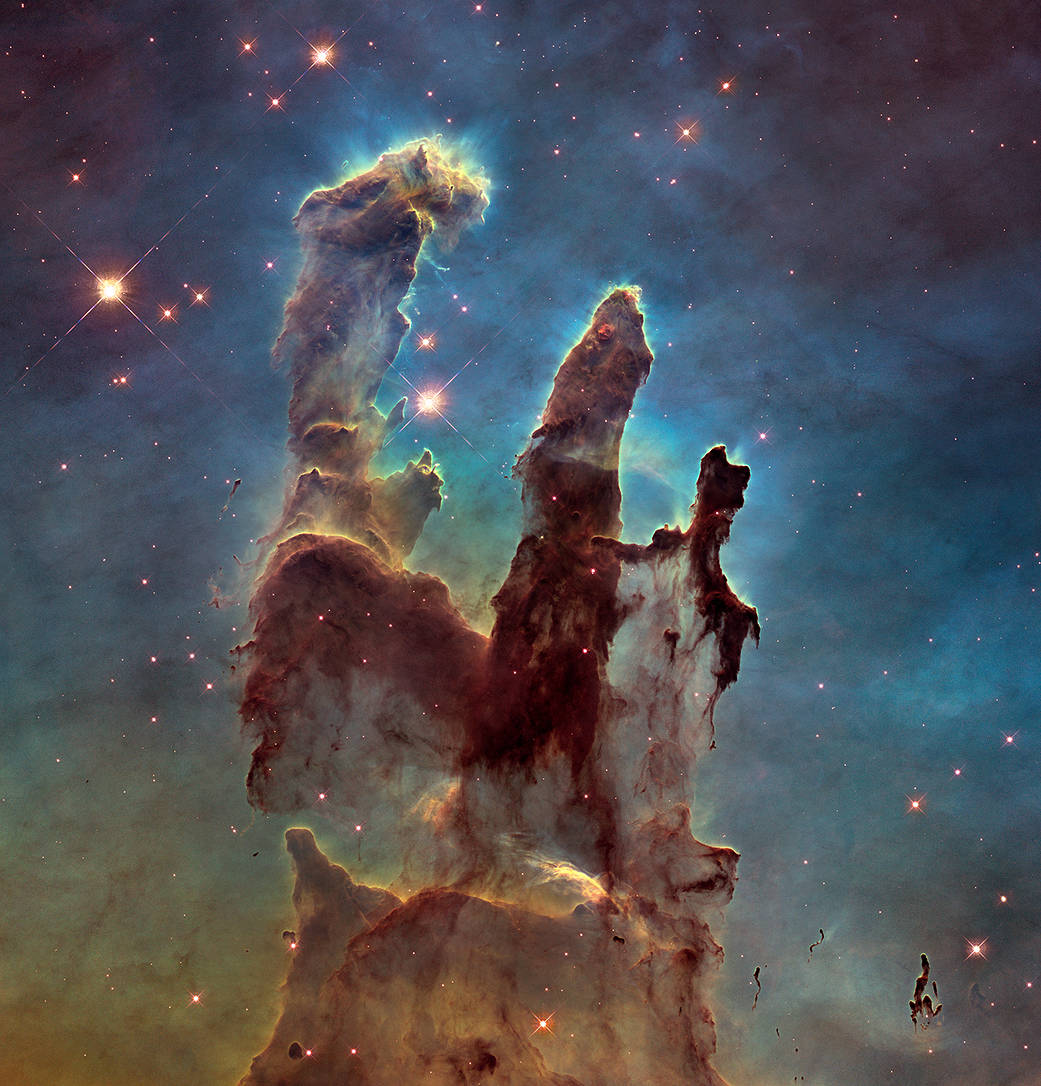Charles Messier’s 16th entry (M16) in his now-famous catalog of celestial objects that aren’t comets is also known as the Eagle Nebula. To me, a wide view of the nebula such as this does indeed resemble a bird of prey, although I’m not sure this is what they had in mind when they named it. The outstretched wings in red are nearly impossible to see through a telescope, and it is rare for an object to be named for its photographic appearance.
In any case, M16 is a great target for either visual or photographic astronomy. In my part of the world (the Pacific Northwest of the United States) M16 is best in the Summer. Although it is one of several popular bright objects in the southern Milky Way, it is the farthest north within this group, and thus least affected by the thicker layer of air that you are looking through when viewing near the horizon. Nevertheless, a sharper image can be captured from another part of the world, such as Australia, where the Eagle flies much higher in the sky. This is such an image.
The last time I captured M16 was in 2014, and it was done entirely with narrowband filters, which produces a false color image. This image from Australia was captured in natural color, plus hydrogen-alpha. The natural color image (RGB) shows what it would look like to the human eye through a telescope (if our eyes were more sensitive to red in dim light), but is overwhelmed by the bright stars all around the nebula:
The brightness of the stars is greatly reduced through a narrowband filter, so applying the H-alpha channel as luminance gives us the best of both worlds; natural color from the RGB image, and clear, sharp detail from the H-alpha. And all of it is made better by photographing it higher in the sky (through a thinner layer of air).
The Eagle Nebula is also famous for the small structure at it’s center, 3 columns of dust that are star-forming regions known as “The Pillars of Creation” from a Hubble Space Telescope image:
I think you can easily find this structure in my image. The Hubble image is considerably higher magnification, of course, and extremely sharp and detailed. They have somewhat better equipment than I do – and are not at all affected by Earth’s atmosphere!


